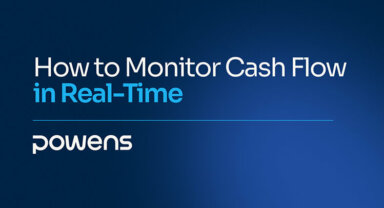Open Banking basics that everyone should know
The easiest way to explain how Open Banking works is to provide a real-life example.
Let’s say you want to apply for a micro-loan. To do this, you navigate to the website or mobile app of the credit institution you’d like to work with to initiate a request.
At some point during the loan request process—what we sometimes refer to as the customer onboarding flow—you’ll be asked to provide details about your current financial situation. If the workflow is powered by Open Banking, here’s what comes next:
- Consent and security: The credit institution will ask you to share your banking data with their secure API, so they can get a real-time pulse check on your finances—including your spending habits and disposable income. Before the sharing of this data happens, you’ll need to consent to a third-party provider (like Powens) initiating the connection between your bank and the credit institution. At this step in the process, you’ll see disclaimers about the security of this connection as well as details about the API’s adherence to regulatory requirements.
- Bank selection: Once you’ve consented to enable the connection between your bank and the credit institution, you’ll need to first select the bank (from among those connected to the API) that you’d like to use for sharing your banking data.
- Authentication: With your bank now selected, you must then log in with your username and password—as you would do on your bank’s website or mobile app—to identify yourself as the true owner of that bank account.
- Account selection: Once logged in, you can choose which account you’d like to share with the credit institution. Many people only have a single checking account with their bank, but others may have multiple accounts in different currencies, for example. This step has been built into the process to ensure that only the right information is shared with the credit institution—and nothing else. Not only does this provide an added layer of security for consumers, but in Europe, it’s also compliant with GDPR regulations.
- Data is shared: Now that you’ve selected the account data that you’d like to share, the connection between your bank (account) and the credit institution is officially established. The credit institution can now use that information to analyze your financial situation and personalize a loan offer tailored specifically to you.
As you can see via this simplified example, Open Banking technology is essentially the catalyst that enables a faster and more direct connection between banks and third-party service providers—in the case above, a credit institution—on behalf of the consumer. Not only does this create a better overall customer experience, but it also ensures that the transactional banking data shared by the customer comes directly from the source in real-time. This is a huge safeguard against fraud and data manipulation.
At the end of the day, Open Banking unlocks countless possibilities to automate data collection and analysis, speed up once manual and tedious processes, improve consumer security, and mitigate all sorts of risk—for all parties involved.
Ready to harness the power of Open Banking for your business?
Schedule a demo with our team today!

 Feb 09, 2023
Feb 09, 2023 














